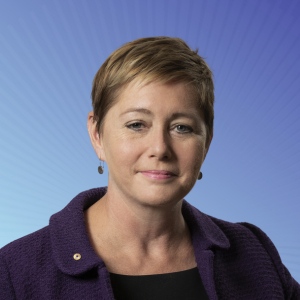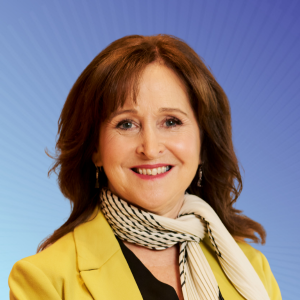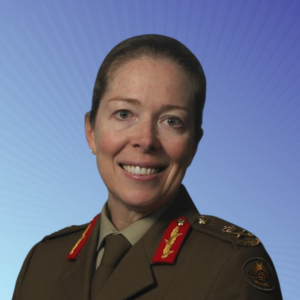Many superannuation funds have developed a new arsenal of tools to help members plan for a high-quality retirement. These tools can re-calibrate how and when a fund engages with members, and include online transactions, personalised content and the option for digital advice offerings to name a few. They can help members measure spending levels and budgets and crucially monitor budgets in real-time, taking the guesswork out of the equation.
When these tools are tailored for each member’s personal super journey, together with digital technology options that are actually fun to use, it’s known as gamification. Gamification is not new and for some years, select super funds have been rolling out gamification elements into their online relationship with members. Spurred on by the digital transformation process of taking their business online for members, online tools for many funds are now part of the member journey. However, the struggle to engage with members continues and remains the number one challenge funds face universally.
The golden age of gamification
The banking sector has done a solid job of engaging customers in online gamification – with points awarded for transactions, downloading and using a mobile app and watching financial education videos, plus round up options for card payments via mobile apps to divert funds to a savings account. The superannuation industry may now be entering a new age of gamification.
The integration of digital technology in our lives is a big reason why gamification is becoming increasingly important. Digital technology opens up information, making it readily available. In the case of superannuation and wealth management, this enables a closer relationship with a member, but it can also present more information than individuals know what to do with.
Humans tend to react the same way with any overload of information – they ignore it. Or they can search for information that corresponds with their point of view and inevitably make the wrong decision. This pre-conceived confirmation bias is where gamification can come in to play, challenging member’s opinion and guarding against them making wrong decisions.
Gamification’s digital nudge capabilities
A high-profile example of the benefits of gamification took place under the Obama administration in the United States. Renowned behavioural economist, Shlomo Benartzi, showed how making improvements to online systems can positively impact financial well-being outcomes.
Benartzi and his research colleagues incorporated big data and refinements to a saving app to re-shape behaviour. In one case, email intervention on enrolment in a savings program for 800,000 military service members provided ‘simple nudges’ to show how small contributions led to increased savings. This email program cost the Department of Defense $5,000 and proved to be 100 times more cost-effective than official policy intervention.
In another project, Benartzi and colleagues showed how the digital nudge on an enrolment screen in an automatic saving app influenced thirty per cent more users to save $5 a day, compared to the current seven per cent who, ironically, were opting for $150 a month.
The latest research into retirement funds by Benartzi relies on Big Data to measure the financial decision-making process and outcomes. There is a strong correlation between online decision-making styles and projected outcomes. In a nutshell, if a member doesn’t spend much time reflecting on certain steps, the larger the possibility a shortfall in retirement savings will occur. Smart software can identify and deliver the nudges those members need to get them back on track.
Gamifying Australian’s superannuation
Gamifying Australia’s superannuation industry is a fresh approach to address the thorny issue of engagement. Despite undertaking considerable steps forward in digital transformation, there are still fund members who have never logged in to their account, never updated their details and who never contact their fund. This is evidence that building a transactional website may deliver cost savings for fund administration but not deliver any increase in member engagement.
Gamifying Australia’s superannuation industry is a fresh approach to address the thorny issue of engagement
However, gamification may help remedy this with fun and cost-effective ways to personalise information and simplify and streamline the tasks at hand.
Successful and popular gamification tasks can be built to intuitively reward positive behaviour and provide feedback to a member when negative behaviours or cognitive biases become apparent.
Examples include:
- online fund applications – instead of disappearing from the screen as the member completes each section, a completion ranking can keep members engaged and provide a sense of accomplishment and propel them forward to the next task
- rank contextualisation – members can see where their superannuation savings position compares to the ASFA Retirement Standard
- salary sacrifice – each time a member makes a salary sacrifice contribution to their superannuation, an achievement badge or message can grade their progress
- reward redemptions – reward redemptions for engagement and commitment to a superannuation fund can reflect different levels of achievement and unlock rewards such as financial training, advice and seminars.
The transactional gamification experience
Concrete steps are now being taken to gamify the overall superannuation roadmap and not just the transactional element of superannuation inflows. The typical online calculator that shows members how much they need to save for retirement but can’t factor in their life stage, can be replaced with a tailored dashboard – and one that picks up where the member left off each visit and is matched to their phase of retirement planning.
And just like many of today’s bank accounts, super funds can use gamification to help members calculate savings, monitor what their super can earn or deliver in retirement and show how monitoring spending can impact their future lifestyle.
In the imminent future, members are going to want to examine their superannuation savings and model various outcomes with calculation engines for multiple objectives. Super funds need to be prepared to help members calculate insurance needs, lifestyle planning, social security and cash flow modelling options. Gamification could help members understand where they are on their superannuation and retirement journey. For example, a rating system can highlight the affordability of various holiday locations in retirement and whether they can be taken annually, bi-annually or possibly not at all. This rating system can act as a digital nudge and prompt more options for members including further online, telephone or face-to-face guided advice; or provide advice options for members on the self-directed advice journey.
This level of gamification is available here and now for those funds that have completed the ‘efficiency piece’ of the digital transformation process. A fully transactional website is the beginning of a highly exciting journey into the future. Longer term we anticipate the next big move as an industry is to virtual reality and are already thinking about what the superannuation world would look post the option of virtual reality statements for members.



































